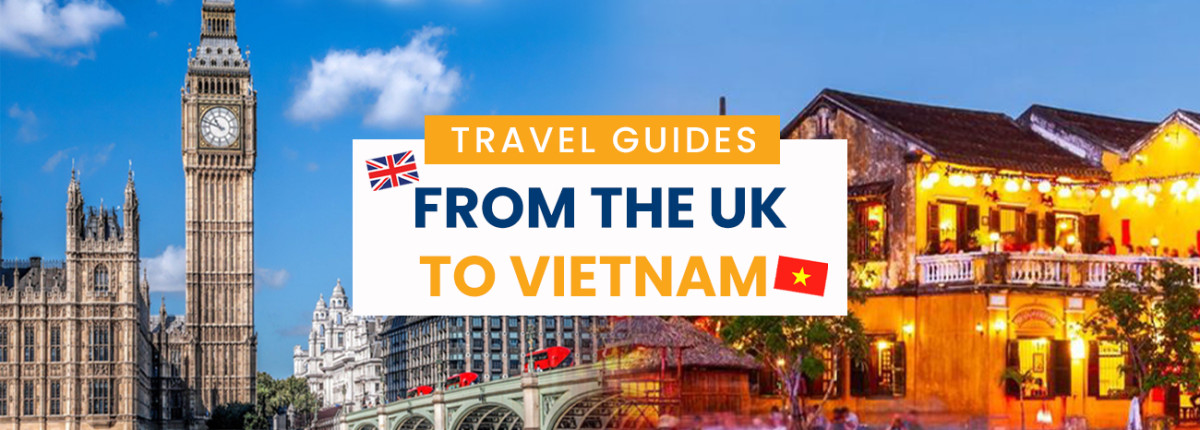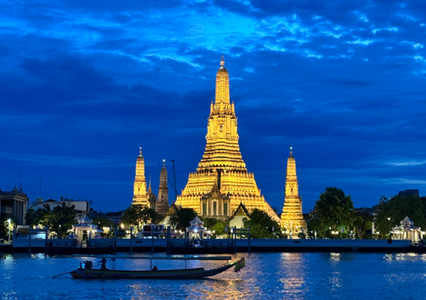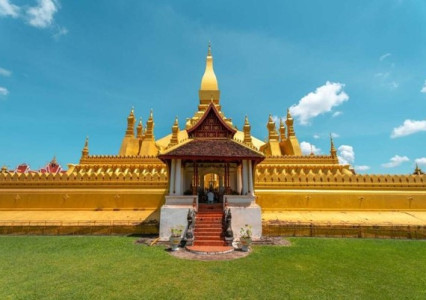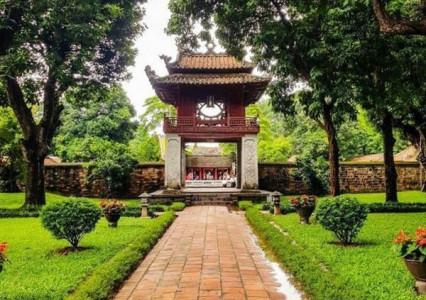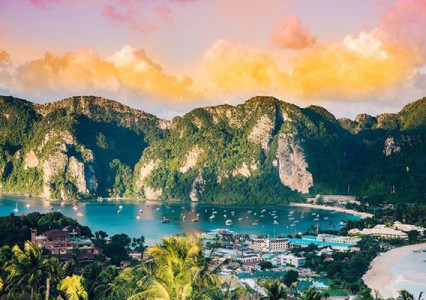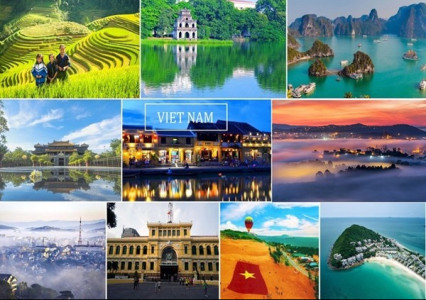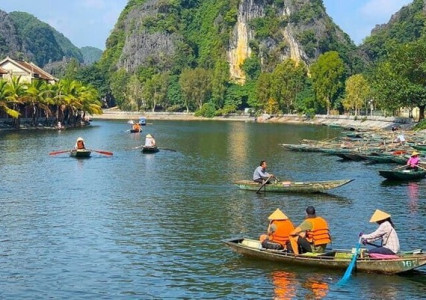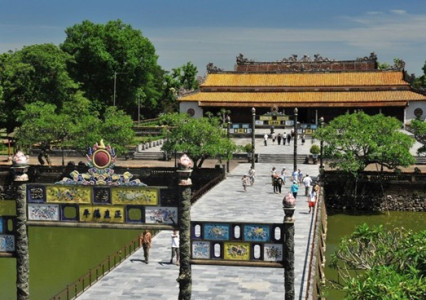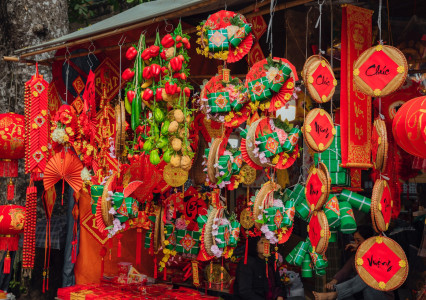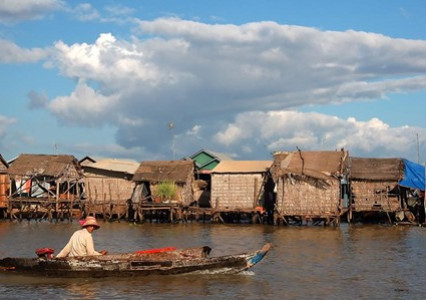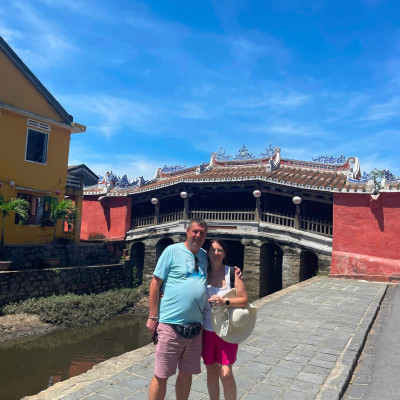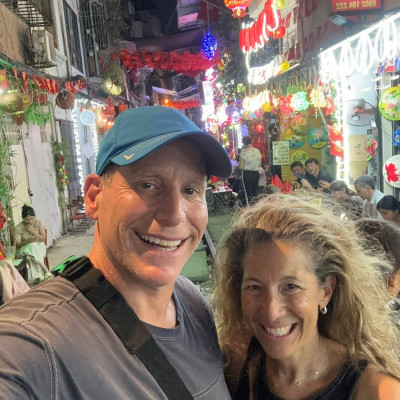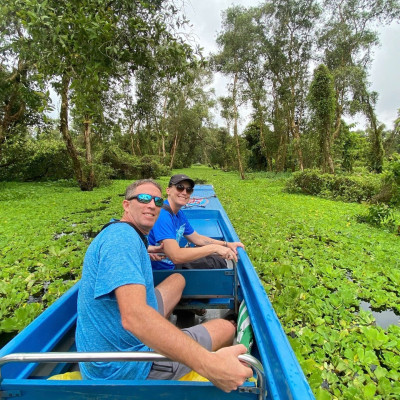Your Complete Travel Guide: Visiting Vietnam from the England
Getting to Vietnam from England
Travelling from England to Vietnam is a well-trodden route, even without direct flights between the two countries. Most UK travellers begin their journey at London Heathrow (LHR), heading to one of Vietnam’s two main international gateways: Hanoi (HAN) in the north or Ho Chi Minh City (SGN) in the south.
While nonstop flights are currently unavailable, a variety of one-stop options ensure a smooth and comfortable trip. Major international airlines such as Qatar Airways, Emirates, Singapore Airlines, Thai Airways, and Turkish Airlines offer regular service with stopovers in cities like Doha, Dubai, Singapore, Bangkok, and Istanbul.
Total travel time typically falls between 14 to 17 hours, depending on the airline and length of the layover. For the best experience, book early, compare routes, and consider travelling during shoulder seasons like spring (March–May) or autumn (September–November) to enjoy lower fares and milder weather upon arrival.
Whether you're heading for the lush landscapes of the north or the lively energy of the south, getting to Vietnam from England is easier than ever with plenty of well-connected flight options.
Travel Tips for Your Flight:
A long-haul flight from England to Vietnam can be smooth and comfortable with a bit of preparation. Here are some practical tips to help you get the most out of your journey:
- Book Early and Compare Airlines
Flights to Vietnam can vary greatly in price depending on the season, airline, and stopover city. Booking several weeks—or even months—in advance can help secure the best deals. Use comparison websites to check for competitive fares and favourable layover times. - Choose Your Stopover Wisely
Many airlines route through major hubs like Doha, Dubai, Singapore, or Bangkok. If possible, opt for a shorter layover or even consider a stopover stay to break up the trip and explore a second destination. - Pack Smart for the Long Haul
Bring essentials in your carry-on such as noise-cancelling headphones, a neck pillow, snacks, a refillable water bottle, and toiletries. Don’t forget to pack a change of clothes, especially if your layover is long or if luggage delays occur. - Stay Comfortable Onboard
Dress in layers, wear breathable fabrics, and stay hydrated. Set your watch to Vietnam time when you board to help adjust your body clock and reduce jet lag. - Prepare Travel Documents in Advance
Ensure your passport is valid for at least six months beyond your arrival date. Check visa requirements for UK passport holders—Vietnam offers e-visas for most travellers, which can be applied for online.
With the right planning, your flight can be the start of a seamless and enjoyable adventure in Vietnam.
Vietnam Visa Options for UK Citizens
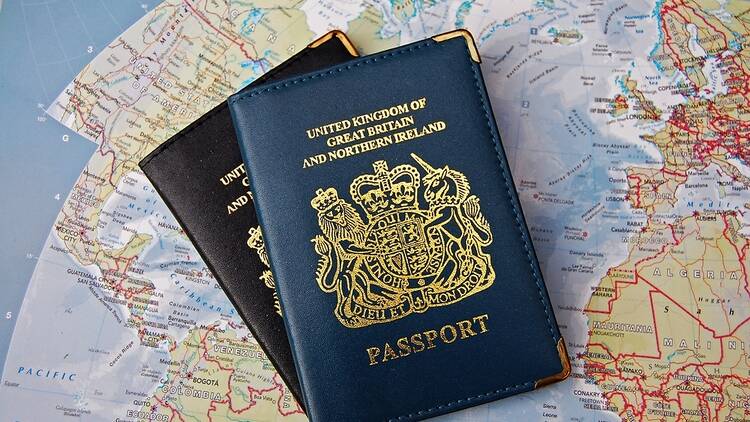
If you’re a British passport holder planning a trip to Vietnam, you’ll be pleased to know that entry is relatively straightforward, with several visa options depending on the length and purpose of your stay.
- Visa-Free Entry (Short Stays)
UK citizens can enter Vietnam without a visa for up to 45 days for tourism or business purposes. This visa exemption applies to single-entry visits only. Make sure your passport is valid for at least six months beyond your arrival date and that you have a return or onward ticket. - E-Visa (Up to 90 Days)
For stays longer than 45 days, or if you plan to re-enter Vietnam, the Vietnam e-visa is a convenient option.
- Available for tourism, business, and family visits
- Valid for single or multiple entries
- Duration: up to 90 days
- Apply online via the official Vietnamese government portal
- Processing time: around 3 working days
- Cost: typically around US$25–50, depending on the type
- Visa on Arrival (with Pre-Approval Letter)
While less common for UK travellers due to the availability of the e-visa, Visa on Arrival (VOA) is another option—especially for those entering via international airports. You’ll need to:
- Obtain a pre-approval letter from a Vietnamese travel agency
- Present the letter at the VOA desk upon arrival
- Pay a stamping fee in cash (USD preferred)
- Embassy Visa (for Special Cases)
For longer stays, work, study, or other special circumstances, you may apply for a visa through the Vietnamese Embassy in London. This route typically requires more documentation and a longer processing time.
How to Apply for an E-Visa
- Visit the official Vietnam e-visa portal: https://evisa.gov.vn
- Complete the online application form and upload the required documents
- Pay the visa fee online
- Wait for the approval email (usually within 3–5 working days)
- Print the e-visa approval and present it upon arrival in Vietnam
Tip: For most leisure travellers from the UK, the visa-free option or the e-visa covers all standard trips. Always check the official government website for the latest visa rules before your departure, as policies may change.
Top Destinations in Vietnam
Hoi An
Hoi An enchants visitors with its beautifully preserved ancient town, characterized by yellow-walled houses, lantern-lit streets, and historic bridges. The city is also a culinary gem, offering unique regional dishes such as Cao Lau noodles. Hoi An’s bustling night market is the perfect place to shop for handmade goods, silk products, and traditional souvenirs.
Da Nang
A balanced mix of beachside relaxation and cultural discovery, Da Nang is an ideal destination for a laid-back holiday. Mornings can be spent enjoying the coastline and ocean views, while afternoons invite exploration of ancient temples and pagodas. In the evening, head to one of Da Nang’s night markets to sample local street food and pick up memorable souvenirs.
Ha Long Bay
Located in northeastern Vietnam, Ha Long Bay is a natural wonder known for its towering limestone formations and emerald waters. It’s a must-visit for those seeking an unforgettable experience. Visitors can explore the bay by traditional wooden junk boats or paddle through smaller coves and hidden lagoons by kayak. The dramatic scenery and peaceful atmosphere make it a highlight of any trip to Vietnam.

Phu Quoc
This idyllic island is known for its lush landscapes and diverse range of activities. Whether you're lounging on the beach, exploring traditional fishing villages, or hiking through national parks, Phu Quoc has something for everyone. Water enthusiasts can enjoy snorkeling, diving, and kayaking, while those seeking relaxation will find peace at the island's many serene spas. Be sure to try the local seafood and visit the lively night markets for an authentic experience.
Hanoi
The capital city of Vietnam, Hanoi is a captivating mix of history and modernity. Visit the Ho Chi Minh Mausoleum, explore the Old Quarter, enjoy traditional water puppetry shows, and try authentic Vietnamese cuisine in this bustling city.
Sapa
Located in the northern highlands, Sapa is renowned for its stunning terraced rice fields and breathtaking mountain views. It's a great destination for trekking, with numerous trails that take you through traditional ethnic minority villages. Whether you're exploring the Fan Si Pan mountain—the highest peak in Vietnam—or immersing yourself in the rich cultural heritage of the area, Sapa offers a unique experience for nature lovers and cultural enthusiasts alike.
Nha Trang
Nha Trang is a picturesque coastal city perfect for travelers who love the water. Its clear blue seas are ideal for swimming, scuba diving, and snorkeling. For those who prefer land-based adventures, nearby mountains offer scenic hiking trails, and natural hot springs provide a relaxing retreat. Nha Trang is also known for its vibrant food scene, especially its abundance of fresh, flavorful seafood.
Hue
Once the capital of Vietnam, Hue is a city steeped in history. Visitors can explore the Imperial City, a UNESCO World Heritage site that features impressive palaces, temples, and the Royal Tombs. The Perfume River runs through the city, adding to the serene and historical atmosphere. Hue is also famous for its distinctive cuisine, with dishes like bun bo Hue (spicy beef noodle soup) being local favorites.
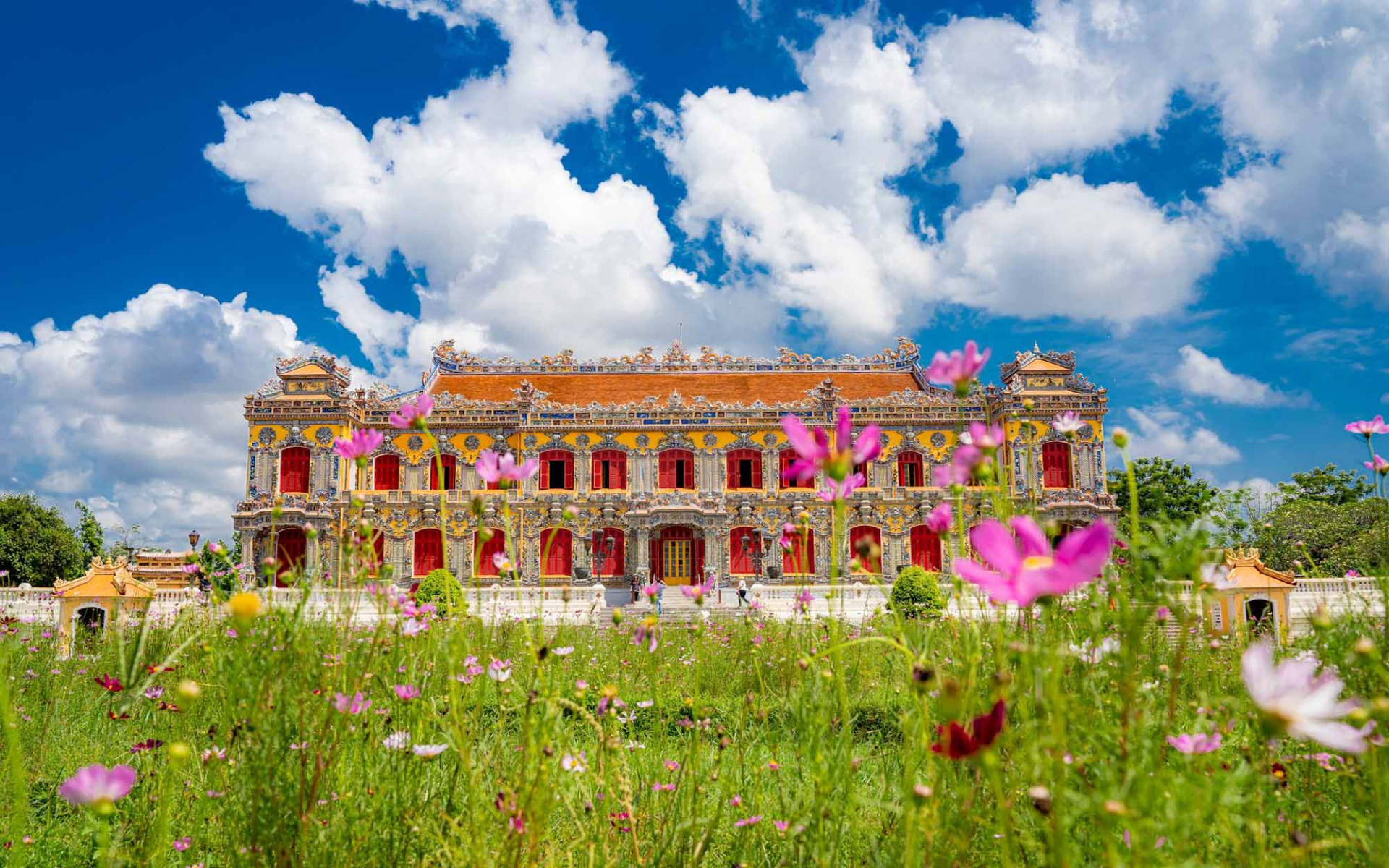
Phong Nha Ke Bang National Park
For adventure seekers and nature lovers, Phong Nha-Kẻ Bàng is a must-visit. Known for its massive caves and lush forests, the park is home to some of the largest caves in the world, including Son Doong Cave. Visitors can enjoy activities like caving, hiking, and exploring waterfalls in one of the most pristine natural environments in Vietnam.
Can Tho
Located in the Mekong Delta, Can Tho offers a fascinating glimpse into rural life in Vietnam. The floating markets on the Mekong River are a major draw, with boats filled with fresh produce and local goods. Visitors can explore the lush waterways by boat, witness daily life on the river, or visit nearby traditional villages to learn about local crafts and agriculture.
Ninh Binh
Often referred to as "Halong Bay on land," Ninh Binh is a tranquil destination filled with limestone karsts, lush rice paddies, and caves. A boat ride through the Tam Coc area or a visit to the stunning Trang An Scenic Landscape Complex offers breathtaking views and a peaceful escape from the crowds. Ninh Binh is also home to Hoa Lu, the ancient capital of Vietnam, and the Bich Dong Pagoda.
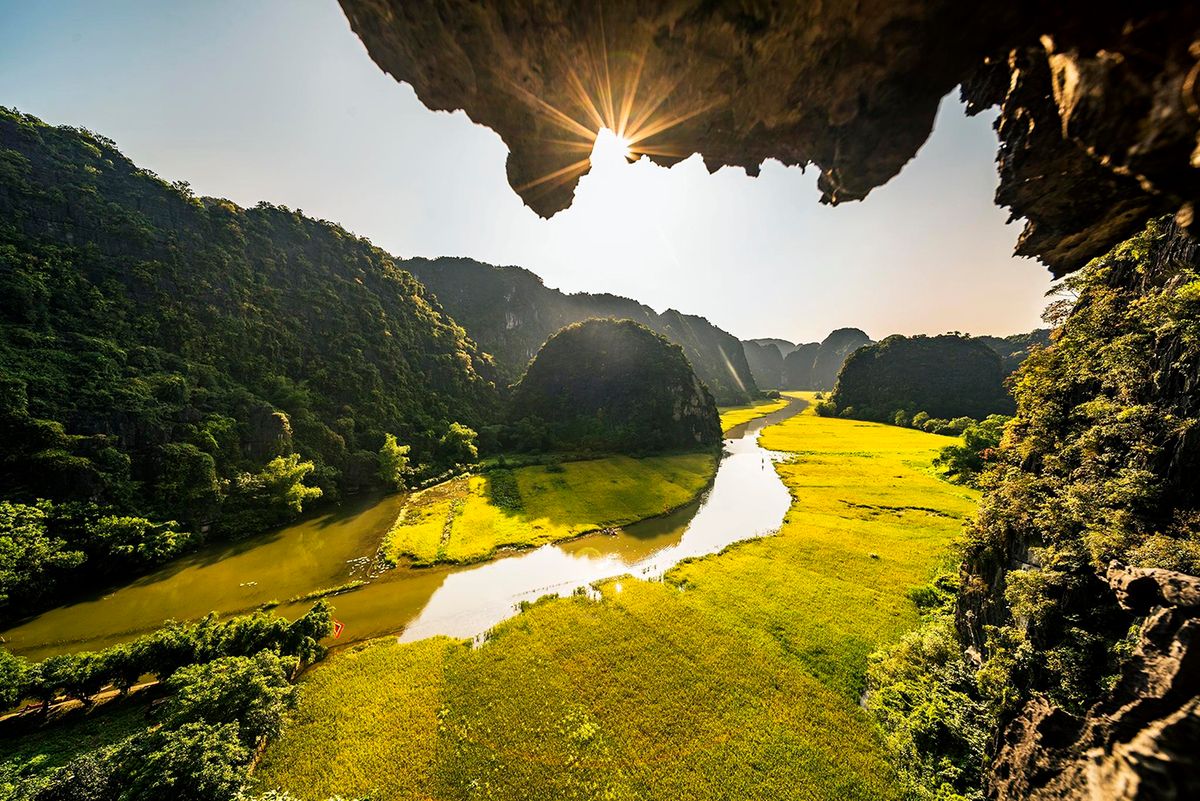
Mui Ne
A popular beach destination on the south-central coast, Mui Ne is known for its stunning sand dunes, particularly the red and white dunes that create a dramatic landscape. It’s also a great spot for windsurfing and kitesurfing, as the area has strong winds. The beach town offers a more relaxed vibe compared to other coastal cities, making it ideal for those looking to unwind or enjoy some water sports.
Con Dao Islands
For those seeking seclusion and natural beauty, the Con Dao Islands are an off-the-beaten-path paradise. This archipelago offers pristine beaches, lush forests, and historical sites. The Con Dao National Park is home to diverse wildlife, including sea turtles, making it a great destination for eco-tourism. The islands also have a dark history as a former site for political prisons, with the Con Dao Prison offering a sobering glimpse into Vietnam’s past.
Top Things to Do in Vietnam
- Take a cooking class and master the art of iconic Vietnamese dishes like pho, spring rolls, and banh mi.
- Explore the countryside by bike or motorbike, immersing yourself in the peaceful rhythms of rural life.
- Visit a floating market in the Mekong Delta and witness the vibrant exchange of goods on the water, a truly unique experience.
- Embark on a cruise through Ha Long Bay, where you’ll be mesmerized by the towering limestone karsts and emerald waters.
- Trek through the hills of Sapa, discovering the beauty of the landscape and connecting with ethnic minority communities who have called the area home for centuries.
- Discover the Ancient Town of Hoi An Stroll through the charming streets of Hoi An, known for its preserved ancient architecture, lantern-lit nights, and delicious regional cuisine. Visit the bustling night market for unique souvenirs.
- Indulge in some of Vietnam's best street food in the bustling streets of Ho Chi Minh City, Hanoi. From pho and banh mi to fresh spring rolls, the food scene here is a must for any food lover.
- Immerse yourself in Vietnam's royal history by visiting the ancient Imperial City of Hue, where the Nguyen Dynasty once ruled. Wander through the grand Royal Tombs, palaces, and temples.

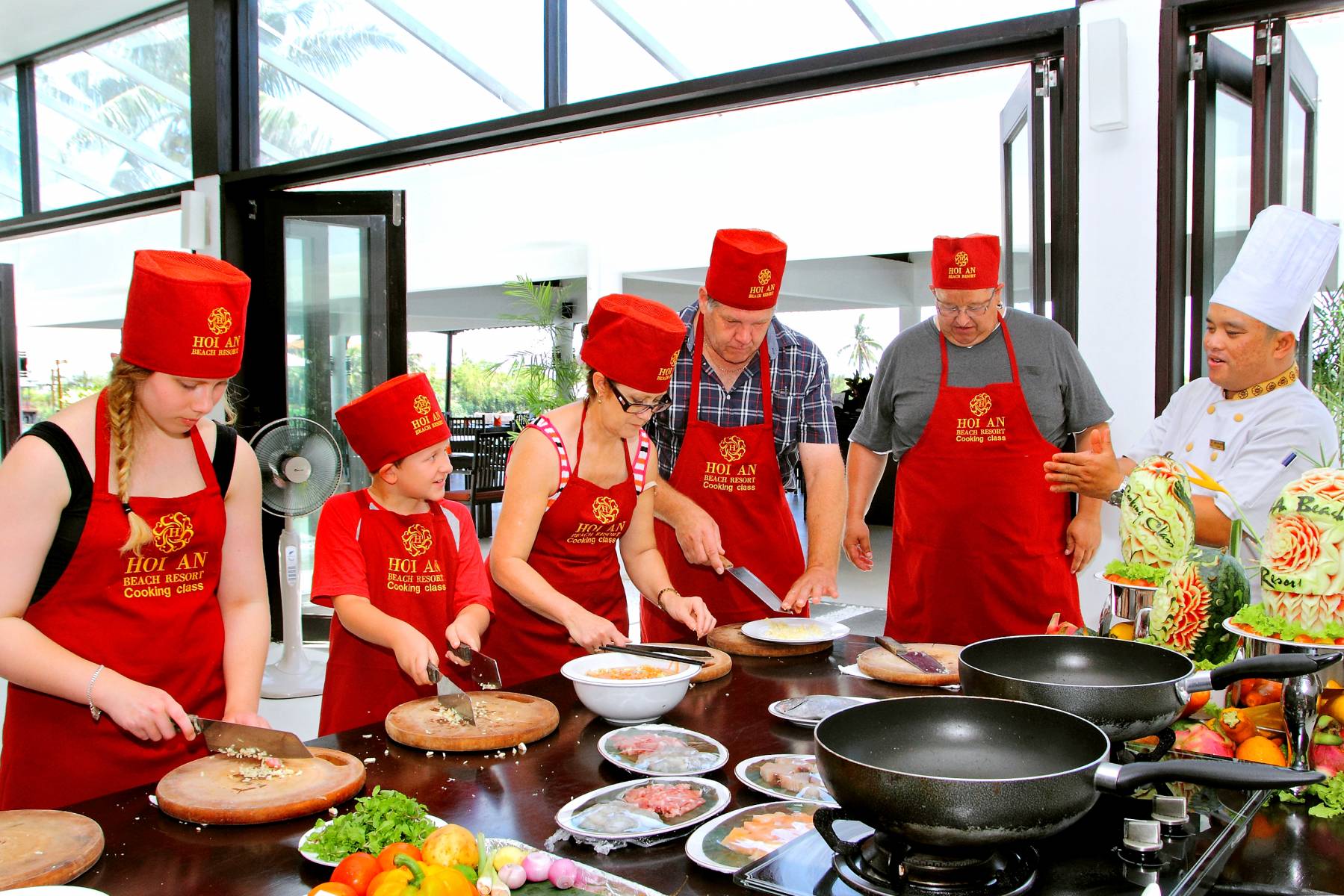
Tips for Traveling to Vietnam from England
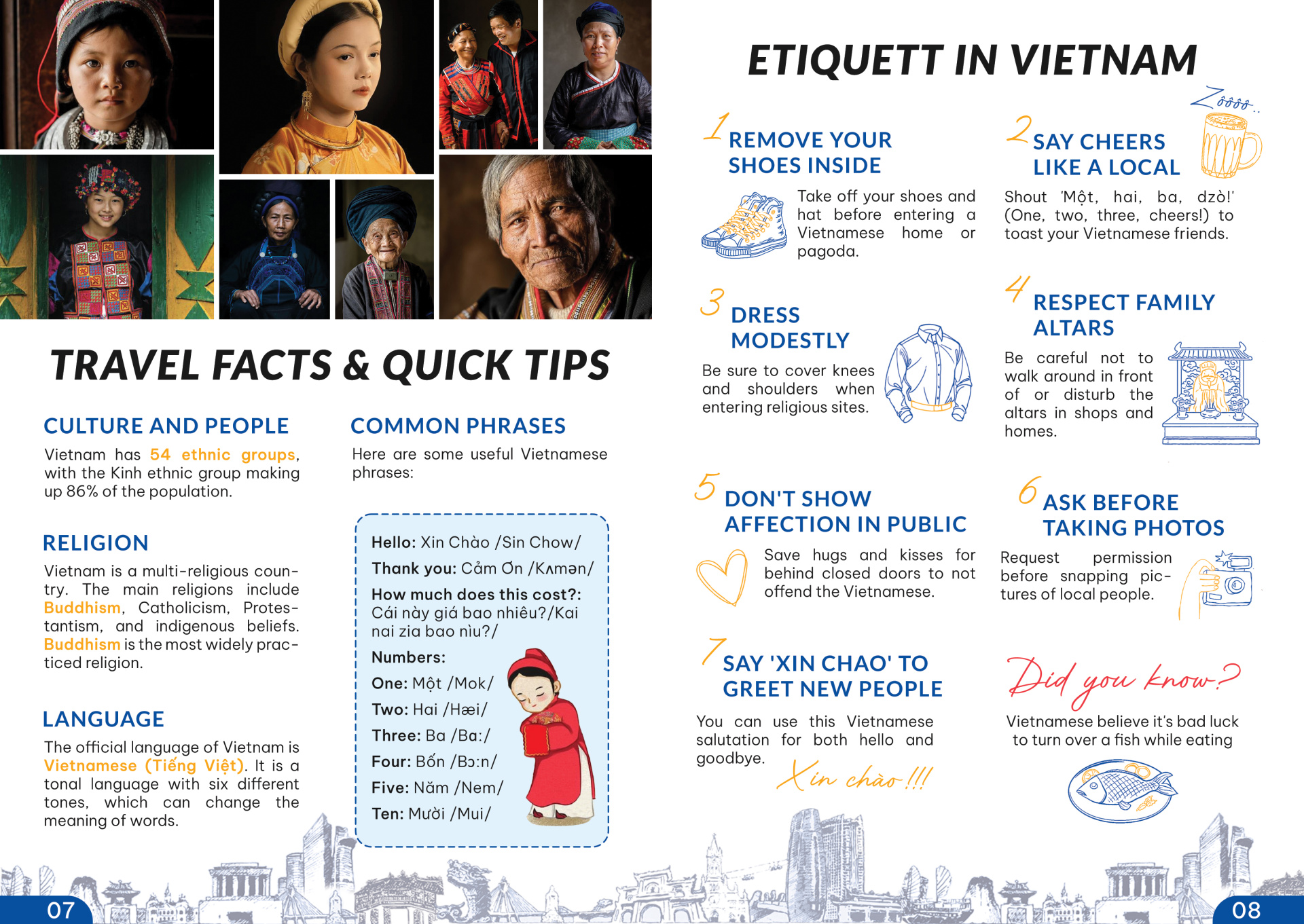
- Pack Appropriately
Vietnam's tropical climate means hot and humid weather year-round. Be sure to pack light, breathable clothing, and bring essentials like sunscreen, a hat, insect repellent, and comfortable walking shoes for exploring. - Learn Basic Vietnamese Phrases
While many people in tourist areas can speak some English, learning a few basic Vietnamese phrases can go a long way in building rapport with locals and showing respect for the culture. Simple greetings and expressions of thanks are always appreciated. - Be Cautious with Street Food
Vietnamese street food is a must-try, offering delicious and authentic local flavors. However, to reduce the risk of foodborne illness, choose busy stalls with a high turnover of fresh ingredients. It's also best to drink bottled or boiled water instead of tap water. - Respect Local Customs and Traditions
Vietnam is a country rich in cultural heritage. When visiting temples or pagodas, always dress modestly and remove your shoes before entering. Be mindful of local customs and avoid discussing sensitive topics like politics or religion to respect local sensibilities. - Transportation
Vietnam has an extensive and affordable transportation network, including buses, trains, and domestic flights. Choose the best options based on your itinerary and preferences. If renting a motorbike, ensure you have a valid license and always adhere to local traffic laws. - Stay Vigilant and Safe
Like any travel destination, staying vigilant is important. Keep an eye on your belongings, particularly in crowded areas, and avoid walking alone at night in unfamiliar or poorly lit areas. Taking common-sense precautions will help you enjoy a safe and worry-free trip. - Money Matters
The local currency is the Vietnamese Dong (VND), and cash is essential in many places. ATMs are common in cities and tourist spots, but it's wise to carry cash for rural areas. Let your bank know you'll be traveling to avoid card issues, and always keep small denominations on hand for everyday purchases. - Stay Connected with a Local SIM Card
Getting a local SIM card in Vietnam is affordable and convenient, ensuring you stay connected throughout your trip. Major providers like Viettel, Mobifone, and Vinaphone offer reliable coverage across the country. You can easily purchase a SIM card at the airport or convenience stores. For newer smartphones, eSIM options are also available. - Pack for the Weather
Vietnam’s climate varies by region. Northern Vietnam can be cool in winter and hot in summer, while the south stays tropical year-round. Lightweight, breathable clothing is ideal, along with sunscreen, a hat, and insect repellent. Don’t forget a light jacket if you're heading north in the cooler months. - Getting Around
Vietnam offers many ways to get around, from domestic flights and trains to taxis and motorbike taxis. Apps like Grab are a popular, safe alternative to traditional taxis in major cities. For long distances, consider taking a flight or the scenic Reunification Express train. - Health Precautions
Tap water in Vietnam isn’t safe to drink, so opt for bottled or boiled water. Carry hand sanitizer, and be cautious with ice and uncooked food in less hygienic areas. It’s also wise to check with your doctor about recommended vaccinations such as Hepatitis A, Typhoid, and Tetanus before traveling. - Learn a Few Local Phrases
While English is spoken in tourist areas, it’s not as common in rural parts. Learning a few basic Vietnamese phrases like “hello” (xin chào), “thank you” (cảm ơn), and “how much?” (bao nhiêu) can enhance your travel experience and help you connect with locals.

Maximizing Your Vietnam Trip: Tips for Every Traveler
Vietnam promises an unforgettable experience, whether you’re splurging like royalty or traveling on a tight budget. No matter your style, you’ll savor delicious food, explore vibrant cities, immerse yourself in rich cultures, and admire stunning landscapes in one of Asia's most captivating destinations. Check out our creative tips for making the most of your money while exploring Vietnam.
Daily cost:
|
Expense Category |
Budget Traveler |
Mid-range Traveler |
Luxury Traveler |
|
Accommodation |
$8 - $16 |
$16 - $40 |
$60 and up |
|
Food (Street Food) |
$4 - $8 |
$8 - $16 |
$16 and up |
|
Food (Restaurant Meals) |
$6 - $10 |
$12 - $20 |
$20 and up |
|
Transportation |
$2 - $6 |
$6 - $12 |
$12 and up |
|
Sightseeing & Activities |
$4 - $8 |
$8 - $20 |
$20 and up |
|
Miscellaneous |
$2 - $4 |
$4 - $8 |
$8 and up |
|
Total Daily Cost |
$20 - $35 |
$50 - $100 |
$120 and up |
Hanoi or Ho Chi Minh city airport?
Consider flying into Ho Chi Minh City (HCMC) instead of Hanoi. As the largest and busiest airport in Vietnam, HCMC offers more flight options, which often translates to cheaper fares compared to those heading to Hanoi in the north. However, keep in mind that HCMC is a more expensive city, so any savings from your flight could be offset if you stay for an extended period. Plan your itinerary with this in mind.
Traveling overnight
Traveling overnight is a great way to save both money and time in Vietnam. While budget flights can be cheap, they come with a higher carbon footprint. Opting for overnight transportation, like sleeper buses or trains, can be a more eco-friendly and cost-effective option. For longer journeys, such as from Hanoi or HCMC to Hoi An or Nha Trang, overnight travel allows you to skip the cost of one night’s accommodation and still make the most of your daylight hours for sightseeing. Both trains and buses offer reclining seats and horizontal berths for added comfort during the journey.
Eating street food
Eating street food is a must when in Vietnam. Street food is not just affordable but also an essential part of the culture. For a very reasonable price, you can enjoy a wide variety of dishes, from pho and banh mi to banh xeo pancakes and bun cha, as well as bold flavors like banana flower salad and bo la lot (beef skewers wrapped in betel leaves).
Throughout the day, especially at lunchtime and evening, street vendors set up plastic tables and chairs on the sidewalks, giving you a spot to sit while you savor your meal. Night markets and transport hubs are the best places to find a diverse range of tasty options.
Itinerary Flexibility
While planning your trip, leave room for spontaneity. Vietnam has so much to offer, from the bustling streets of HCMC to the tranquil landscapes of Ha Long Bay. Be ready to adjust based on weather, local festivals, or tips from fellow travelers.
Engage with Locals
Strike up conversations with locals to get a deeper understanding of Vietnamese culture and traditions. A little Vietnamese goes a long way, and locals are often happy to help visitors navigate their cities.
Stay Hydrated and Cautious with Food: Vietnam can be hot and humid, so drink plenty of water. If you’re sensitive to street food, start with simple dishes and gradually work your way up to more adventurous options.

Other Articles
YOU MAY ALSO LIKE

23 DAYS - Private Vietnam 23 Days 22 Nights - Major of VietNam Trip
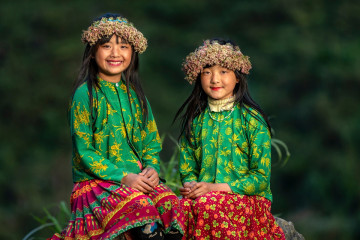
19 DAYS - Private Vietnam 19 Days 18 Nights - Explore Vietnam
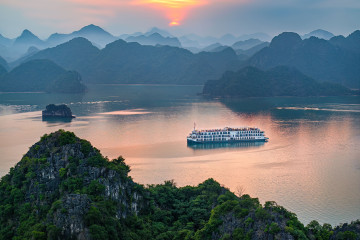
38 DAYS - Private Vietnam- Laos- Cambodia- Thailand 38 Days 37 Nights - Indochina Odyssey
Speak to Your Local Travel Expert





